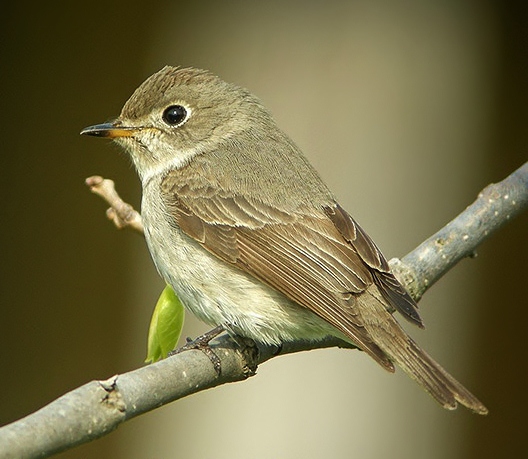 |
| Photo by Aurélien Audevard (Korea Birds) |
Common name:
Asian brown flycatcher (en); papa-moscas-pardo (pt); gobemouche brun (fr); papamoscas castaño (es); braunschnäpper (de)
Taxonomy:
Order Passeriformes
Family Muscicapidae
Range:
These birds are found breeding in south-eastern Russia, Mongolia, northern China, Korea, Japan and also in the Himalayas, India, Thailand and Vietnam. Some population migrate south to winter in south-east Asia, India, Indonesia and the Philippines.
Size:
These birds are 11-13 cm long and have a wingspan of 19-21 cm. They weigh around 12 g.
Habitat:
These birds are found breeding in a wide range of forested habitats, including temperate forests, moist tropical forests, mangroves, and also in plantations, rural gardens and parks within urban areas. They winter in similar habitats and also in swamp areas.
Diet:
Asian brown flycatcher mainly feed on flying insects, which they catch by sallying out from a perch.
Breeding:
They nest in a cup made made of lichen, moss, and grasses and lined with finer materials. the nest is built by the female and placed on a tree branch or set in fork of a tree. The female lays 4-5 olive grey eggs, which she incubates alone for 11-13 days. The chicks are fed by both parents but they is no available information regarding the length of the fledging period.
Conservation:
IUCN status – LC (Least Concern)
This species has a very large breeding range. The are no exact estimates on the global population size, but there breeding population in Russia, China, Korea and Japan all fall on the 10.000-100.000 individuals range and there are more breeding population outside these countries. The population is suspected to be stable in the absence of evidence for any declines or substantial threats.







